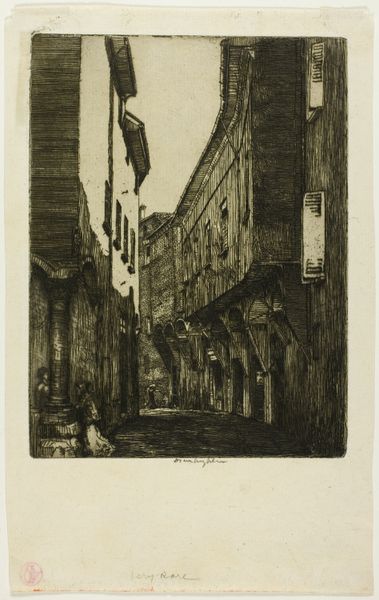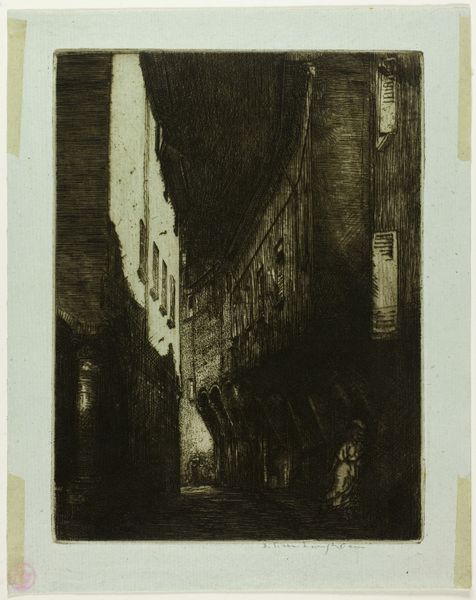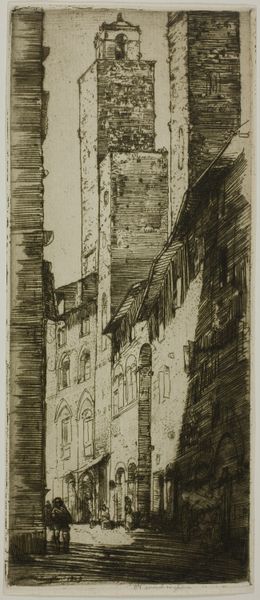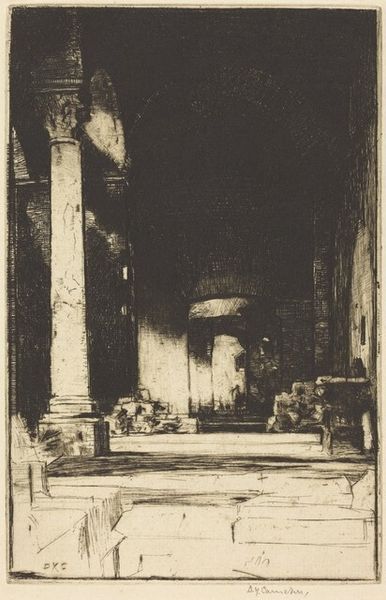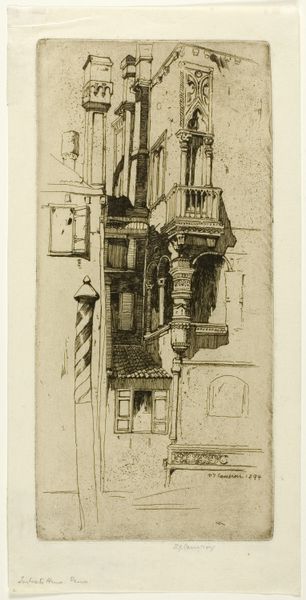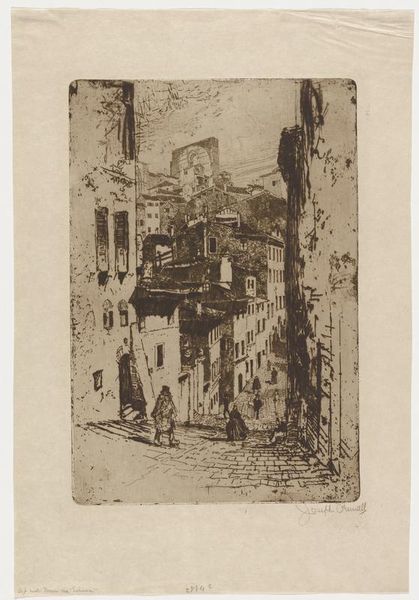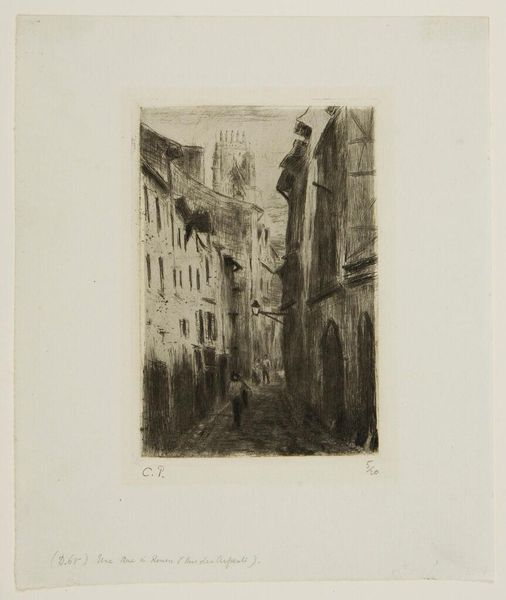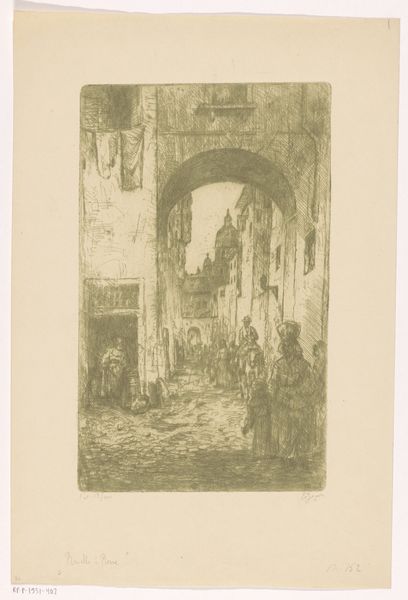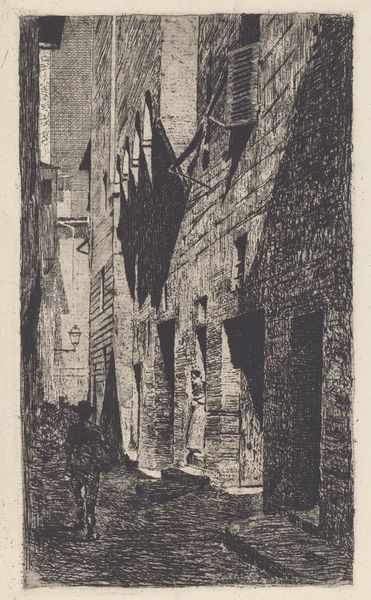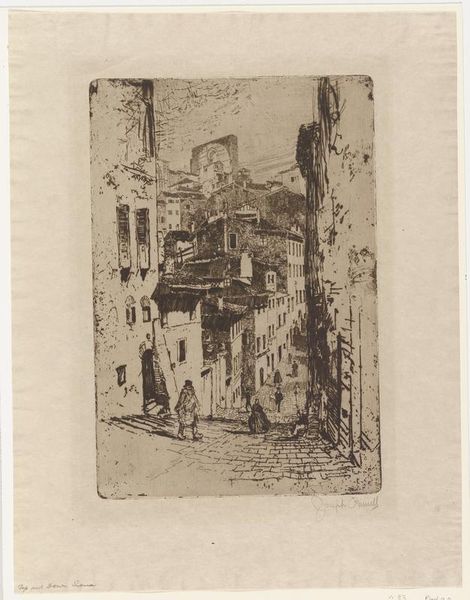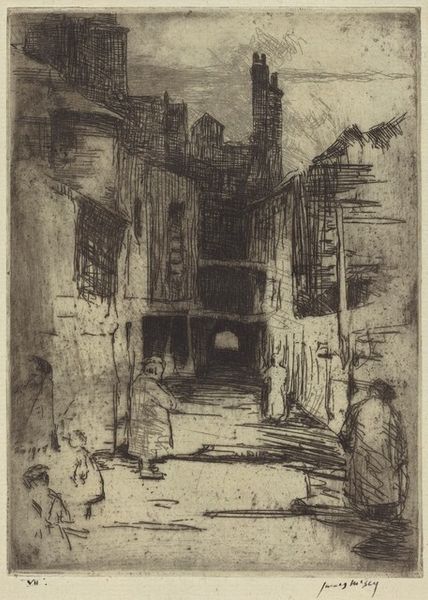
Saint Gervais, Rue des Barres, plate four from the Paris Set 1904
0:00
0:00
drawing, print, etching, paper
#
drawing
# print
#
etching
#
paper
#
cityscape
#
realism
Dimensions: 257 × 159 mm (image/plate); 285 × 171 mm (sheet)
Copyright: Public Domain
Curator: Look at this etching, "Saint Gervais, Rue des Barres, plate four from the Paris Set," created by David Young Cameron in 1904, here at the Art Institute of Chicago. Editor: Instantly, I'm struck by how somber yet inviting it feels. The stark contrasts create this theatrical, almost film-noir mood. Curator: Absolutely. Cameron uses light and shadow masterfully. It's part of a set depicting Paris, but it avoids the usual postcard prettiness. He shows us something more atmospheric, more lived-in. Think about the copper plate, bitten by acid, pressed onto paper… a real labor to render what looks like fleeting light. Editor: Yes, the materiality is important here. It's not just a drawing; it's a print, multiple originals crafted through a specific and demanding process. We need to remember the skilled labor involved in achieving that sense of spontaneity. What about the scale and how it impacts the artwork? Curator: It's relatively small. Viewing it, you are drawn in—as though you're stepping into that shadowed Parisian street yourself, a place where the past lingers in the stones. Cameron uses the etching lines to evoke textures and surfaces with almost palpable realism. Editor: Consider the social aspect as well. Who could afford these prints, and what did they signify? Was it a burgeoning tourist trade romanticizing older parts of the city? It invites one to question what aspects of the urban experience get valued. Curator: Interesting. For me, the human figures almost ghost-like, become less important than the architecture—the weight of history, quite literally, bearing down on them. Maybe Cameron suggests how transient individuals are amidst something so enduring as a city? Editor: Perhaps. Considering the urban shift with modern construction, did this kind of art serve as a nostalgic commodity? Something about process, and the handmade resisting standardization... It’s more than meets the eye. Curator: So true! Ultimately, the print becomes a record not just of a place, but of a feeling. A memory etched in light and shadow. Editor: A powerful piece. A reminder that art carries weight, both literally through its materials and figuratively in its commentary about labor, beauty and society.
Comments
No comments
Be the first to comment and join the conversation on the ultimate creative platform.
